5 Sleeping Positions Destroying Your Posture Overnight – and 3 You Should Try

Do you wake up with back pain every morning? It might be that you are sleeping on a bad mattress or that you did something during the day that threw your posture off. However, there is another common culprit of back issues: Sleeping in the wrong position. Dr. David Tannenbaum, DC, Tannenbaum Chiropractic, Beverly Hills, CA, reveals 5 sleeping positions destroying your posture overnight – and 3 you should try to promote spinal health.
Sleeping on Your Stomach
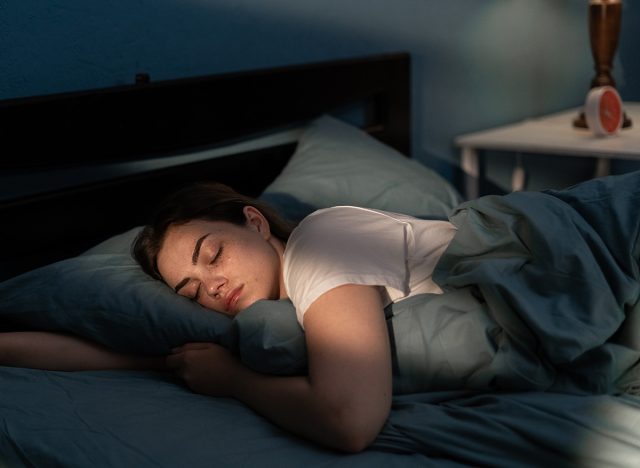
"Sleeping on your stomach can biomechanically increase spinal load and hyperextension through the lumbar spine," explains Dr. Tannenbaum.
Sleeping with Hands Overhead
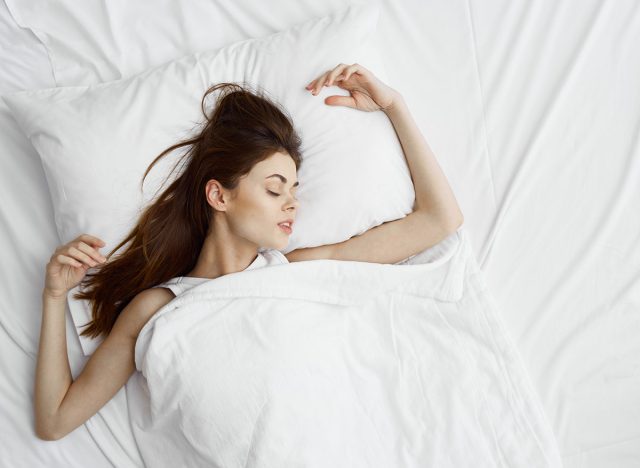
Another no-no is sleeping with hands overhead. "Sleeping with hands over the head can cause static extension of the spine leading to rib flaring. Another side effect would be shoulder impingement due to the head of the humerus going forward and decreasing space within the shoulder joints," Dr. Tannenbaum explains.
RELATED: 7 Healthy Fats to Include in Your Weight Loss Diet
Spooning

Spooning may be cozy, but it's not good for your spine health. "Spooning with your partner can also put your body in poor sleeping positions due an increase of spinal loading that can cause low back pain," he says.
Sleeping with a Soft Pillow
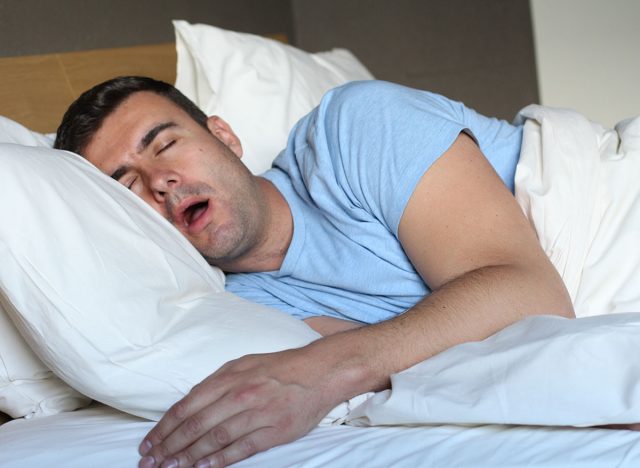
When it comes to choosing pillows, a softer one could have some hard results on your back. "Sleeping on a soft pillow can lead to poor posture and malalignment of the neck. The soft pillow allows the neck to sink in more, causing static lateral flexion within the spine of the neck," he says.
Fetal Position

The fetal position may be okay for babies, but adults should avoid it. "Sleeping in the fetal position increases spinal flexion loads leading to slouched postures," says Dr. Tannenbaum.
Best Sleeping Positions: On Your Back with Pillow Under Knees
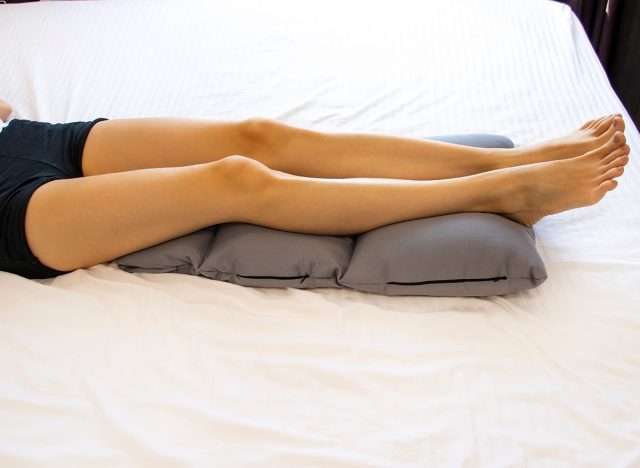
Dr. Tannenbaum also reveals the three best sleeping positions. The first? "On your back with a pillow under your knees to support the natural curve of your spine," he says.
On Your Side with Pillow Between Knees
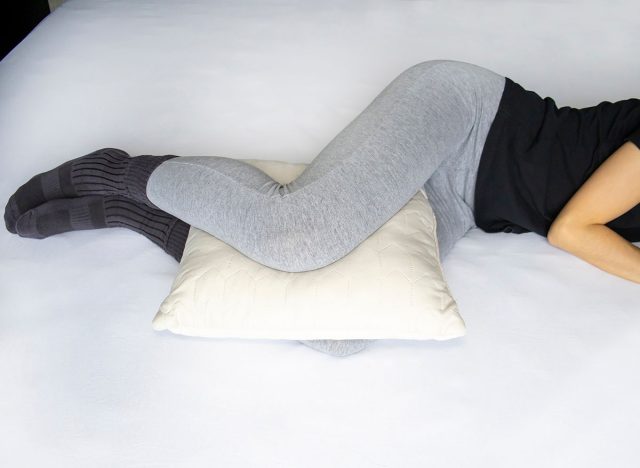
The second position he recommends? "On your side with a pillow between your knees to align your hips and spine," he reveals.
Fetal Position with Pillow to Support Head
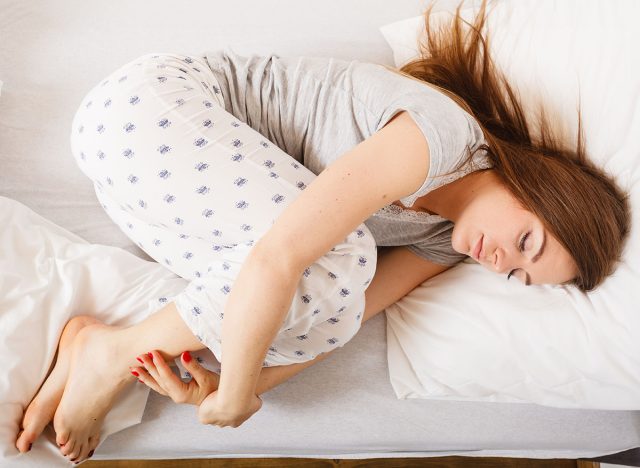
The final position he recommends is "in the fetal position with a pillow to support your head and neck," he says.
RELATED: How I Lost 100 Pounds in 12 Months With 2 Simple Lifestyle Tweaks
Conclusion: Sleeping Position Is Important

The bottom line? "It's important to find a position that is comfortable for you and promotes good spinal alignment to ensure a restful night's sleep," says Dr. Tannenbaum.
💪🔥Body Booster: Choose a pillow with the right firmness to support your neck and spine, as overly soft pillows can lead to poor posture and neck pain.




